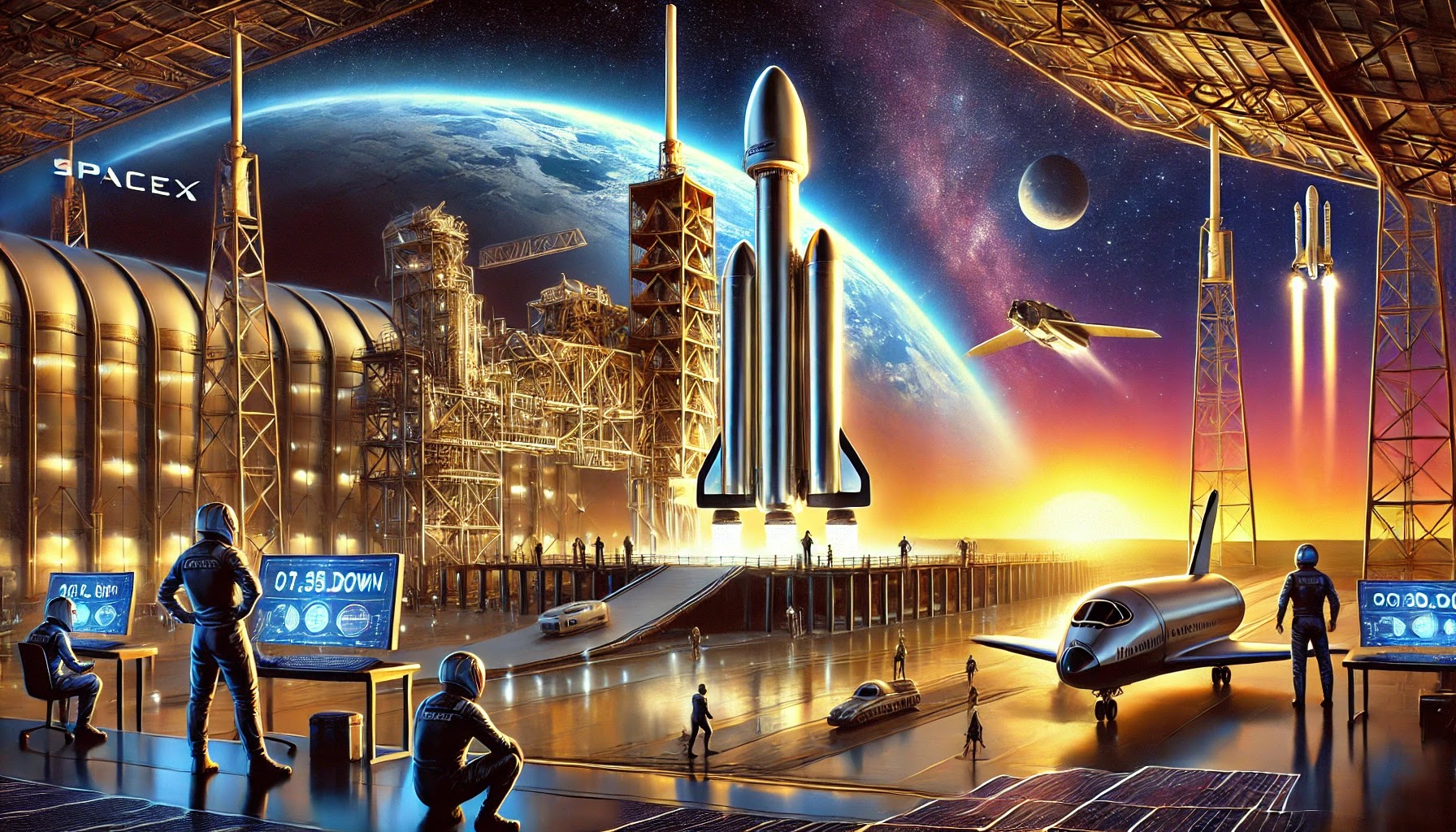As we stand on the precipice of another monumental leap in space exploration, SpaceX's Starship Flight 7 is on the horizon, promising to redefine our understanding of reusable rocket technology and space travel. Here's what you need to know as we count down to this potentially groundbreaking test flight.
The Journey So Far
SpaceX's Starship program, under the visionary leadership of Elon Musk, has been a beacon of innovation in the aerospace industry. Designed to be fully reusable, Starship aims to drastically reduce the cost of space travel, making Mars colonization and interplanetary missions not just a dream but a tangible future.
Starship Flight 7 marks the seventh test in an ongoing series of flights that have each pushed the boundaries of what was previously thought possible. From the initial "hop" tests to the more ambitious orbital attempts, each flight has built upon the last, gathering crucial data and refining the technology.
What's New with Flight 7?
Block 2 Design: This flight introduces the first use of the Block 2 Starship design, featuring significant upgrades over its predecessors. These include enhanced heat shields, a stretched fuel tank for longer missions, and improved propulsion systems. The Block 2 version is not just about incremental improvements but about proving that Starship can handle the rigors of space travel more efficiently and safely.
Payload Deployment: For the first time, Starship will attempt to deploy a payload during its flight. This isn't just any payload; it consists of 10 Starlink V2 simulators, setting the stage for future satellite deployment missions. This test is pivotal as it demonstrates Starship's capability to carry and deploy satellites, a key component of SpaceX's ambition to expand its Starlink internet constellation.
Engine Reusability: Another highlight of Flight 7 is the re-flight of a Raptor engine previously used. This step towards reusability at the engine level is crucial for reducing costs and increasing the frequency of launches, aligning with SpaceX's overarching mission.
Flight Details and Objectives
Launch Date and Time: The Starship Flight 7 is scheduled for January 16, 2025, with a 60-minute launch window opening at 4:00 p.m. CT. This slight delay from the initial January 15 target is due to weather considerations, showcasing SpaceX's commitment to safety and precision.
Mission Profile: The flight will follow a suborbital trajectory similar to previous tests but with specific new objectives:
- Booster Catch: The Super Heavy booster will aim for a return to the launch site, where it will be caught by the launch tower's "chopstick" arms, a feat previously accomplished in Flight 5 but skipped in Flight 6 due to technical issues.
- Starship Operations: The upper stage, or "Ship," will attempt an engine relight in space, simulate payload deployment, and aim for a controlled splashdown in the Indian Ocean.
- Data Collection: Every aspect of the flight will be scrutinized for data that could lead to design tweaks and operational improvements, particularly in areas like heat shield performance during reentry.
Expectations and Anticipated Outcomes
Proving Reusability: If successful, this flight will further validate the concept of fully reusable spacecraft, potentially setting the stage for more frequent and less costly launches.
Technological Milestones: Each successful test not only inches SpaceX closer to its goals of lunar and Martian travel but also challenges the existing paradigms of space engineering. The deployment of dummy satellites and the re-flight of engines are steps towards operational readiness.
Public and Industry Impact: With each flight, public interest in space travel grows, alongside investment in space tech. A successful Flight 7 could bolster confidence among investors, partners, and the broader public in SpaceX's ambitious projects.
Challenges and Risks
SpaceX's approach has always been one of "fail fast, learn faster," but with each flight, the stakes and expectations grow.
- Weather: As seen with the recent delay, weather remains an unpredictable variable.
- Technical Challenges: The complexity of catching a returning booster or managing a payload release in space are feats fraught with technical risks.
- Regulatory Hurdles: With plans for more frequent launches, SpaceX must continue to navigate regulatory landscapes to ensure safety and compliance.
What Does Success Look Like?
Success for Starship Flight 7 isn't just about the flight itself but about what it enables in the future.
- **A smooth booster catch would prove the reusability concept at scale.
- **Successful payload deployment would signal readiness for operational satellite launches.
- **Gathering extensive data would allow for iterative improvements, making each subsequent flight safer and more efficient.
Looking Beyond Flight 7
While we focus on this upcoming test, the broader vision involves using Starship for:
- Human Spaceflight: Including missions to the Moon under NASA's Artemis program and future Mars missions.
- Commercial Opportunities: From space tourism to rapid point-to-point travel on Earth.
- Scientific Research: Leveraging Starship's capacity for large payloads to conduct expansive experiments in space
Conclusion
As we countdown to Starship Flight 7, we're not just watching a rocket launch; we're witnessing the unfolding of humanity's next chapter in space. Whether it's the thrilling prospect of catching a booster in mid-air, the meticulous deployment of satellites, or the enduring vision of multi-planetary existence, this flight encapsulates the spirit of exploration and innovation. Stay tuned, as each moment could redefine our cosmic capabilities.
This blog post is based on a synthesis of current information available on SpaceX's activities and plans, reflecting the dynamic nature of space exploration where each step forward is a leap for humankind.









0 Comments